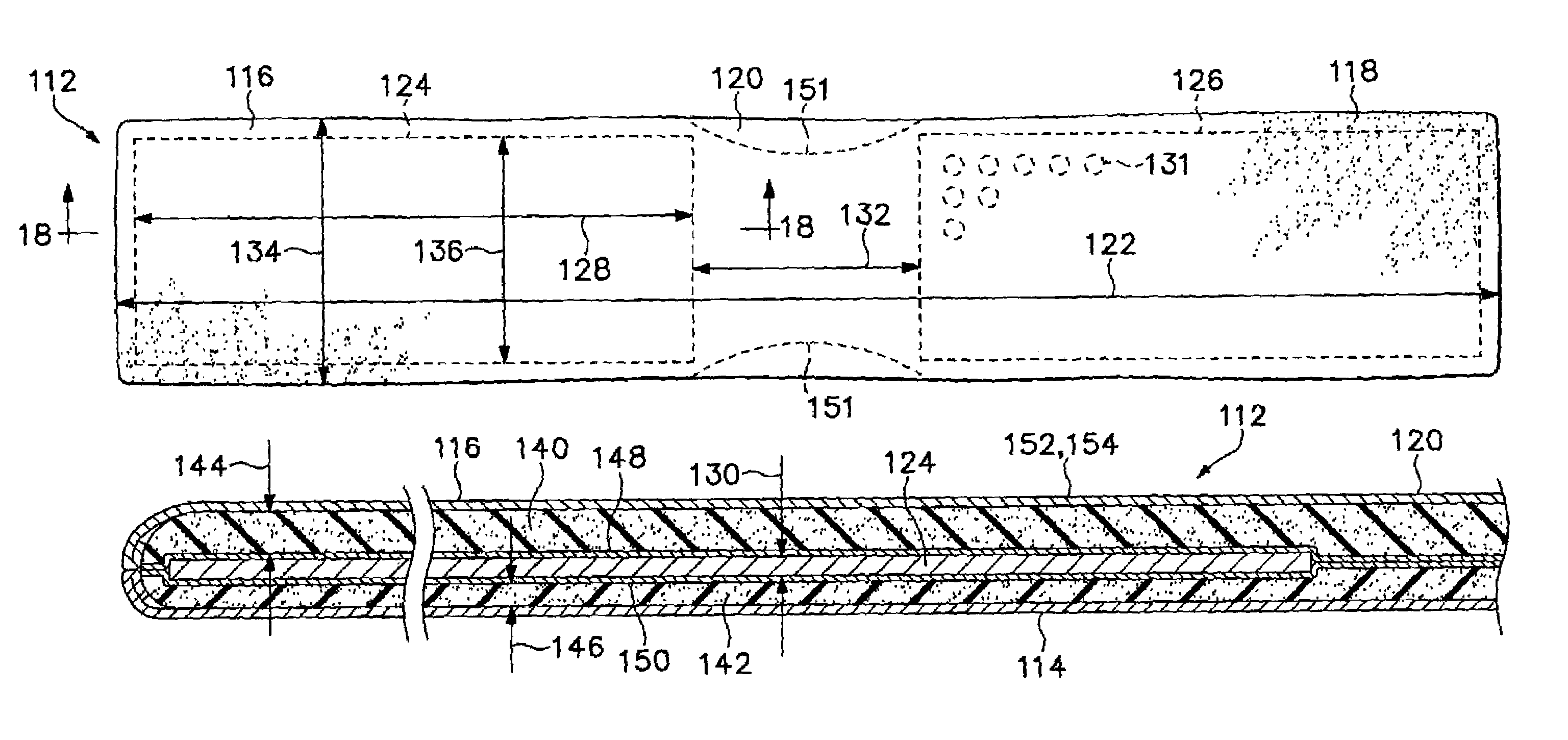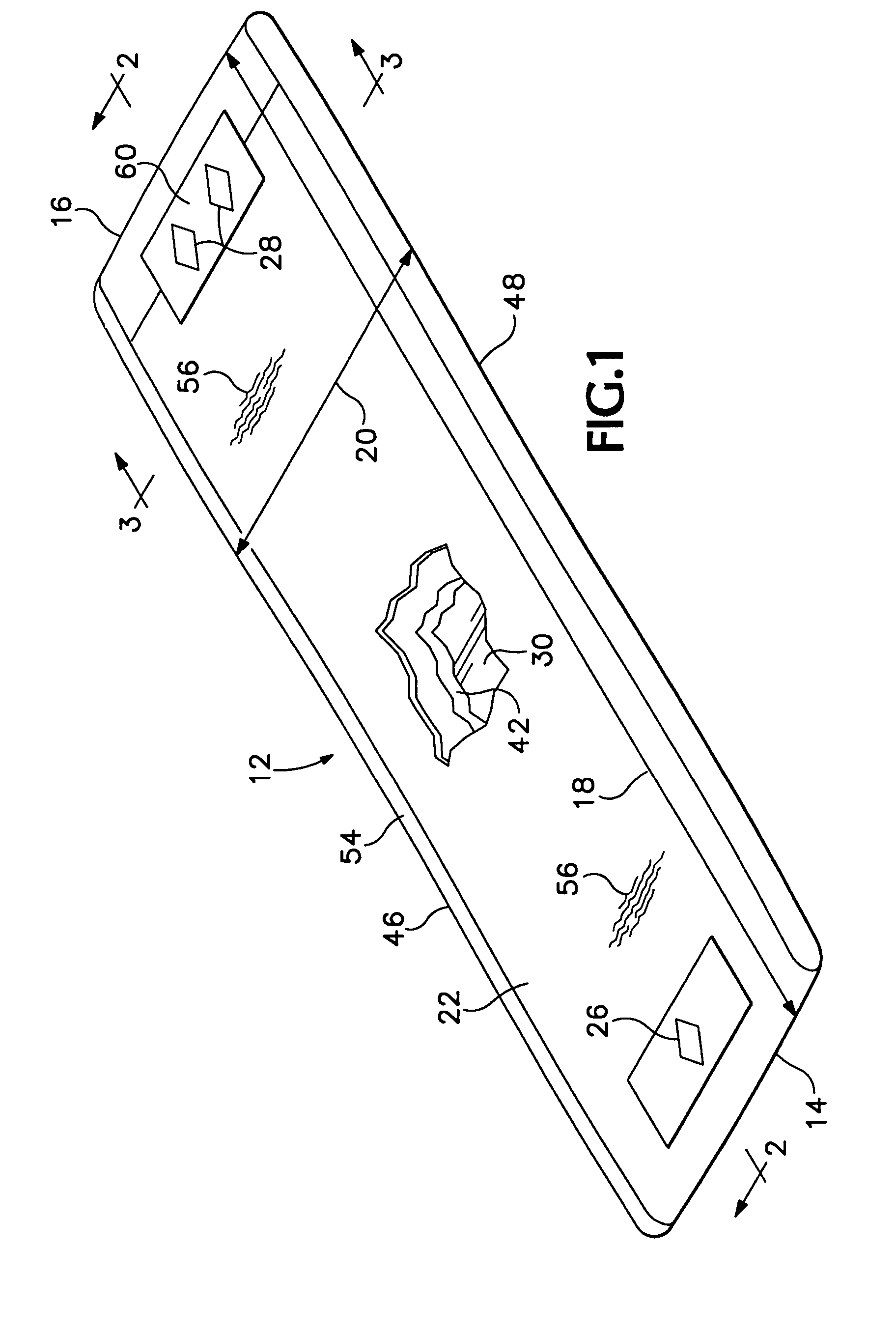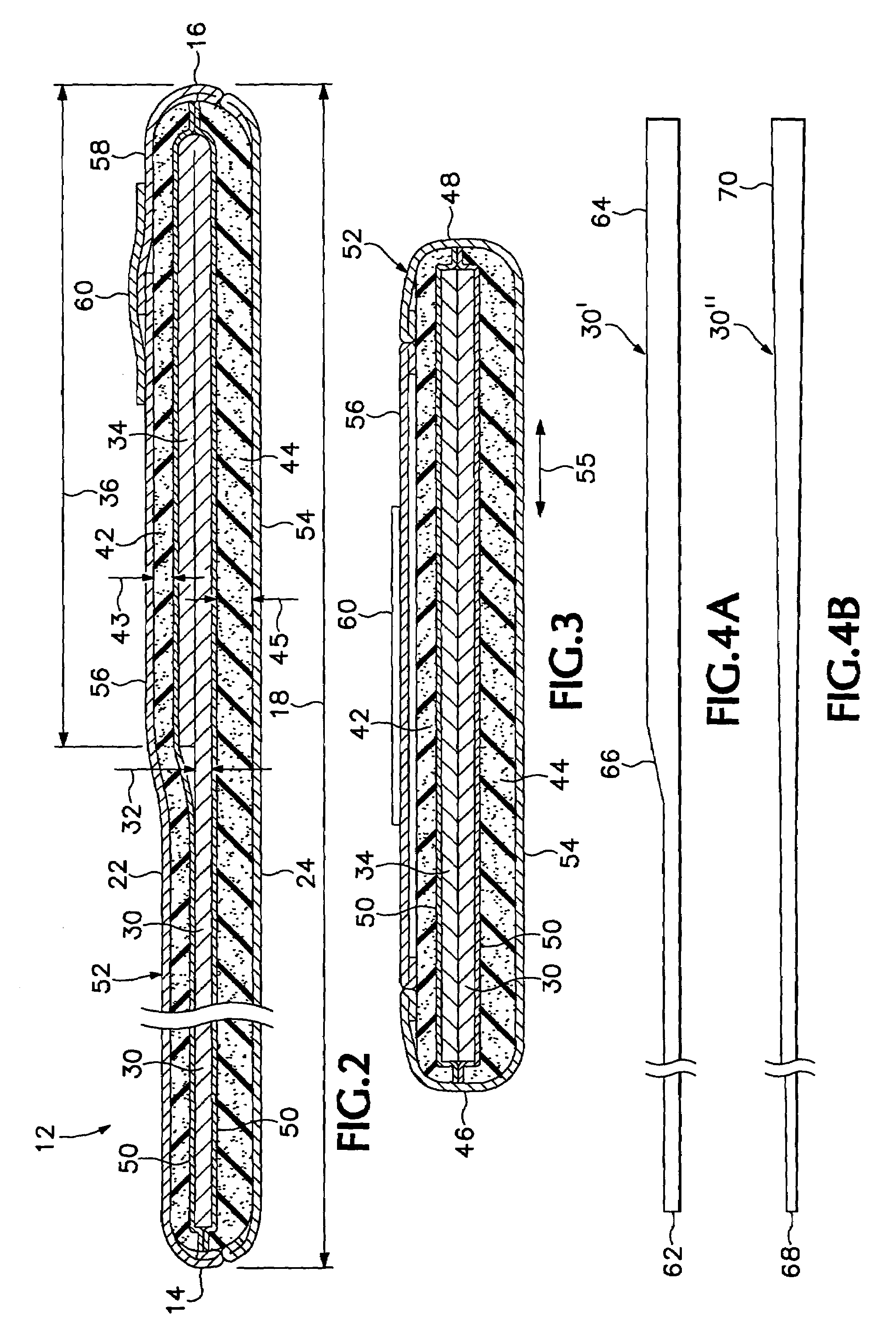Orthopedic splints
a technology of orthopaedic splints and splints, which is applied in the field of orthopaedic splints, can solve the problems of inability to reform the thermosetting plastic or fiberglass-reinforced resin splint once cured, the preformed metal splints are also quite rigid and difficult to bend or mold, and patients are at increased risk of injury, etc., to achieve convenient portability and storage, and ensure the effect of precis
- Summary
- Abstract
- Description
- Claims
- Application Information
AI Technical Summary
Benefits of technology
Problems solved by technology
Method used
Image
Examples
Embodiment Construction
[0046]Referring now to the drawings which form a part of the disclosure herein, in FIGS. 1 and 2 a splint 12 which is a first preferred embodiment of the present invention is shown in a generally planar configuration in which the splint is manufactured and is usually packaged for shipment and for storage prior to its use. A body of the splint 12 has a first end 14 and an opposite second end 16 defining a length 18 that is greater than the width 20. For example, the length 18 may be twelve to fifteen inches and the width 20 may be in the range of four to six inches, and preferably about 4½ inches for a splint 12 intended for use to support the wrist of an adult.
[0047]The body of the splint has a skin contact, or closer face 24, intended to be placed in contact with a patient's skin or wound dressing, and shown in FIG. 2, but facing downward in FIG. 1. An opposite or farther face 22 of the splint facing upward, in FIG. 1, and normally faces outward, away from a patient's skin when the...
PUM
 Login to View More
Login to View More Abstract
Description
Claims
Application Information
 Login to View More
Login to View More - R&D
- Intellectual Property
- Life Sciences
- Materials
- Tech Scout
- Unparalleled Data Quality
- Higher Quality Content
- 60% Fewer Hallucinations
Browse by: Latest US Patents, China's latest patents, Technical Efficacy Thesaurus, Application Domain, Technology Topic, Popular Technical Reports.
© 2025 PatSnap. All rights reserved.Legal|Privacy policy|Modern Slavery Act Transparency Statement|Sitemap|About US| Contact US: help@patsnap.com



